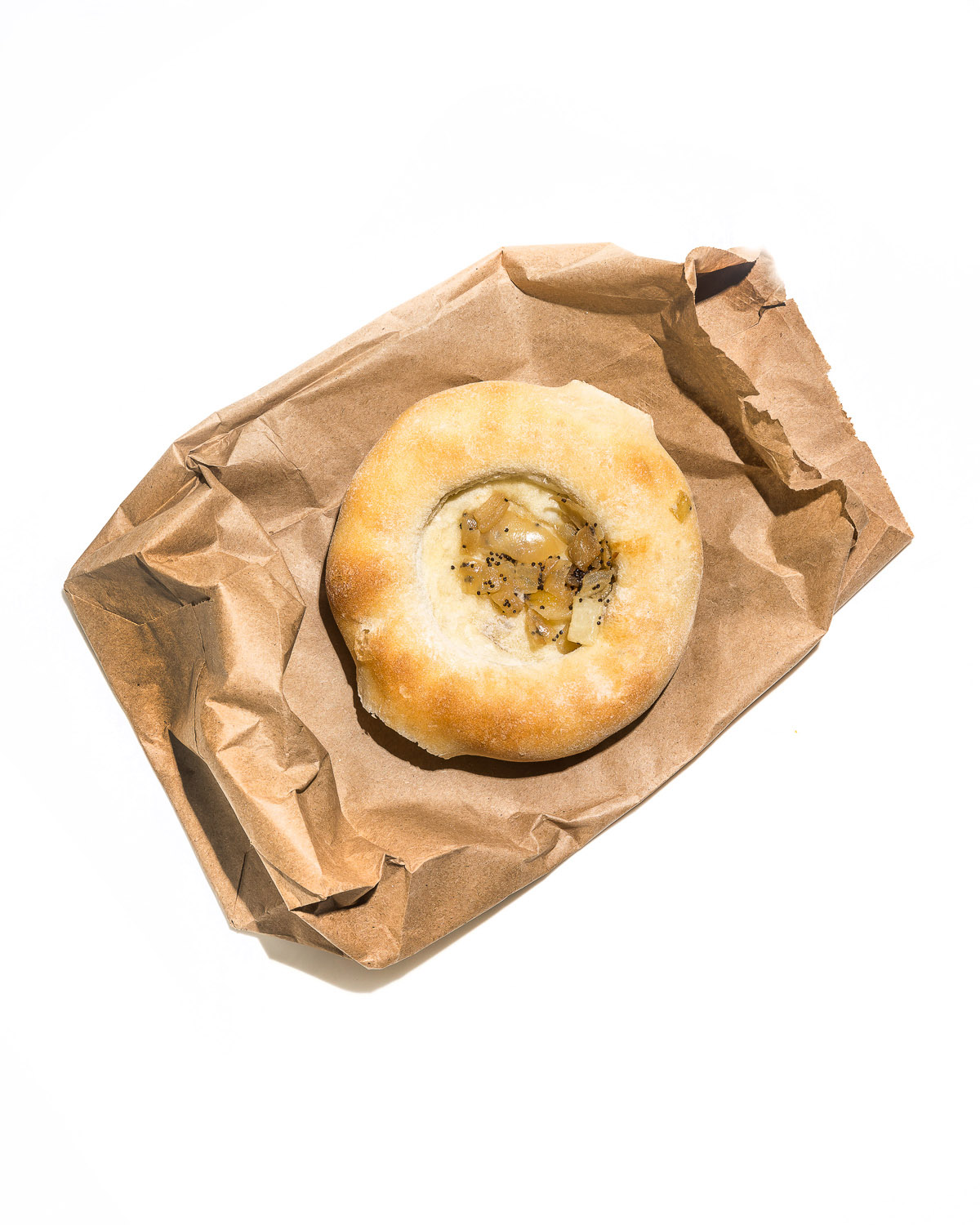Bialys
The bialy was the sole invention and provenance of Jewish bread bakers in Bialystok, Poland. They were much bigger in Bialystok than they are in New York—roughly the size of an 8-inch salad plate. I have a photograph taken in 1939 of a boy holding up a bialy, which, by the way, was called a Bialystoker kuchen. They were made only in Bialystok. People from the surrounding regions called the Bialystok Jews Bialystoker kuchen fressers.
When I was doing research for my 2000 book The Bialy Eaters, I got a lot of arguments from people asserting that bialy is just a New York name for pletzel. But it isn’t true. It is the same dough, but the form is different. In fact, I developed my own theory as to how the bialy was invented. I think it was indeed made by bakers who made pletzels, which are big onion discs, which in Bialystok always had poppy seeds, and, of course, onions. My theory is that a pletzel, having been formed but not baked, fell on the floor and somebody stepped on it with the heel going into the center, and being frugal decided to bake it anyway and see what happened. And so, the bialy was born.
I interviewed many former Bialystokers about their town’s most famous export. They never split them the way we split a bagel. Whatever was going to be put on, if anything, was put on top. (As Max Ratner, a Bialystok native, told me, “Who could afford to put anything on them?” “Were they a luxury?” I asked. “Darling,” he responded, “food was a luxury.”)
But what everyone loved most was the fact that the rim was soft but the center was very thin and crisp—which is almost never achieved here in America. Someone in the family always liked the soft part, and someone else liked the crisp part, and it was to the bialy’s credit that it could make everyone happy.
Mimi Sheraton is the author of The Bialy Eaters and 1,000 Foods to Eat Before You Die.

